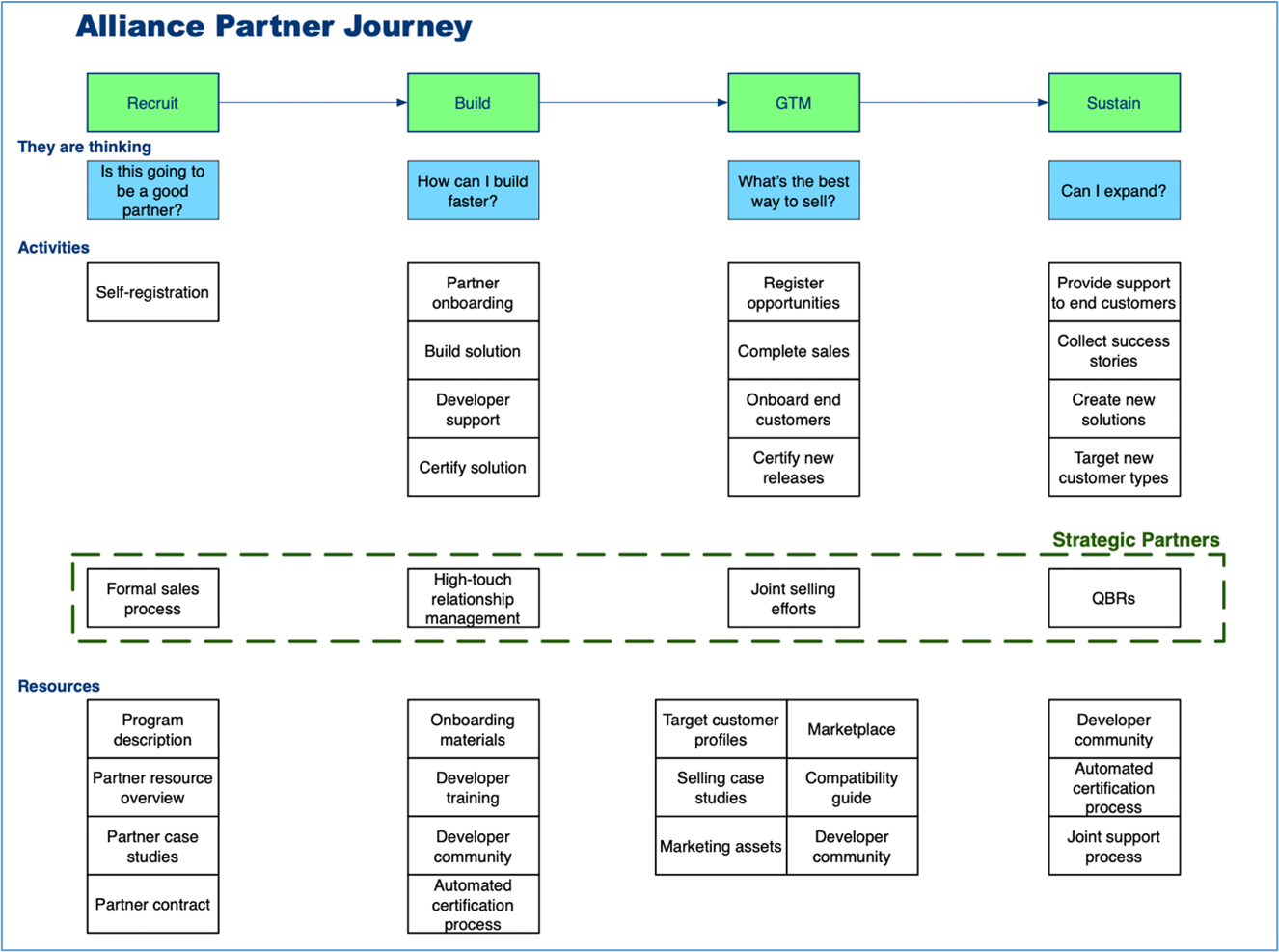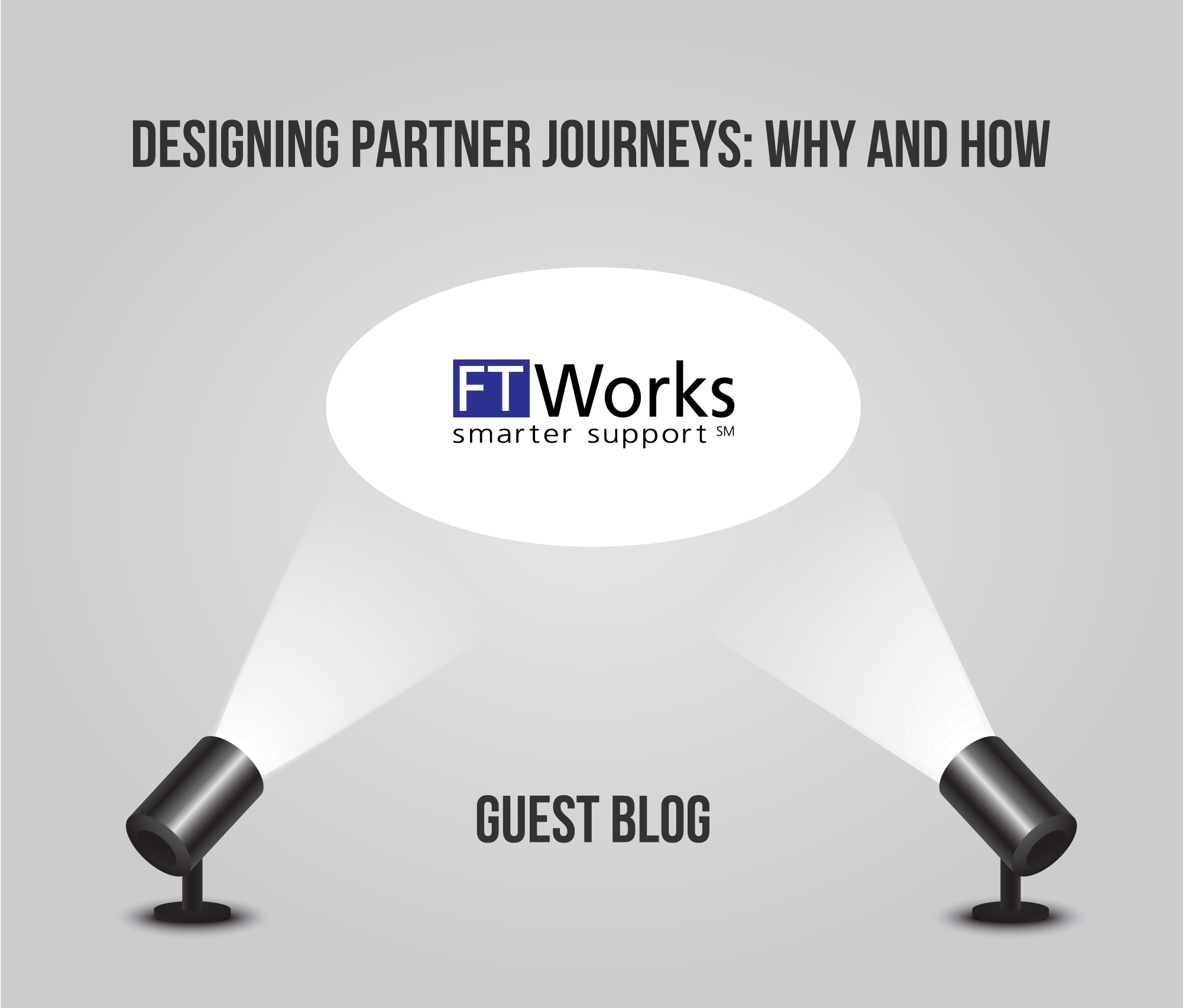Why use journeys?
Alliance partners are often an afterthought when it comes to onboarding and support. Alliance Partner teams are small and often choose to focus their limited resources on recruiting partners.
Defining partner journeys, from recruitment to sustained relationships, is a great tool to amplify the impact of the Alliance Partner team. Why? Journeys allow various organizations to collaborate harmoniously and make for a much-improved partner experience. The creation of partner journeys is usually led by Alliance Partner team but other organizations, especially the Support team can also spearhead the effort
What is a partner journey?
A partner journey is a visual description of steps and experiences partners have from making the decision of becoming a partner all the way to maintaining a long-term relationship. The beauty of partner journeys is that they are defined from the partners’ perspective and help internal, siloed organizations understand what’s important to partners. They can be used to identify and fix weak or missing touchpoints.
How do I create a partner journey?
Since journeys capture the total experience of the partners, it’s essential to involve all the organizations that contribute to it. It’s a great idea to propose a basic journey (start with our example, below)—but do hold a series of workshops with relevant organizations to refine it.
Do I need to worry about different personas?
Journeys are typically defined for specific personas or roles, so you probably need to define a journey for the partners’ developers and a different one for the partners’ salespeople. For simplicity’s sake, this post presents a single journey, which would be a great start if you currently have none.
How do I organize partner journeys?
It’s very useful to consider a small number of phases for the journeys. The example below (Figure 1) includes four:
- Recruiting (everything that happens up to the point of a partner signing the agreement)
- Building (creating and certifying the solution, assuming that’s your model, up to solution certification)
- GTM (orchestrating the first few sales)
- Sustaining (nurturing the relationship to success and expansion)
Feel free to adapt the phases to your specific needs, without going overboard. Few organizations need more than six or so phases. Remember that the phases must make sense to the partners, and they need clear exit and entry criteria.

Figure 1: Sample Partner Journey
What activities are captured in a journey?
It’s useful to capture both activities and resources. For instance, during the Build phase the partner will get onboarded and build the solution (two examples of activities) and also use resources such as training materials and the developer community. When you add an activity to the journey, always question what resources are needed to perform it.
Do I need different journeys for different levels of partners?
If the levels represent different experiences, yet. Otherwise, you may be able to capture the difference in a single journey, as we did in our example with the “strategic partners” inset.
Do I create as-is or “ideal” journeys?
It’s helpful to dream a little: why plot today’s mediocre experience? Do identify and document stretch goals, maybe up to a year ahead, and revise the journeys every six months to a year.
Francoise Tourniaire is the author of The Art of Support and the founder of FT Works, a boutique consulting firm that helps technology companies improve their customer success and support organizations through targeted consulting and training solutions, including creating customer and partner journeys. You can reach her here.

